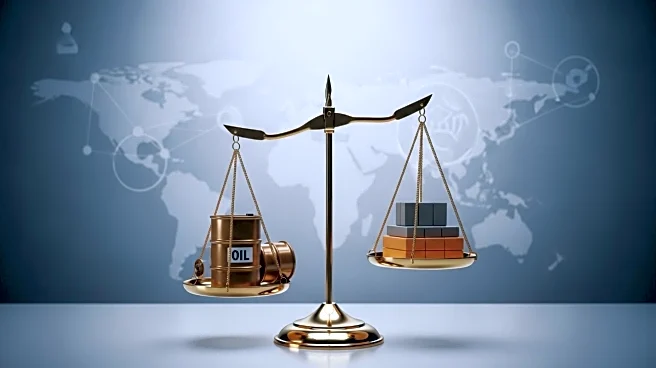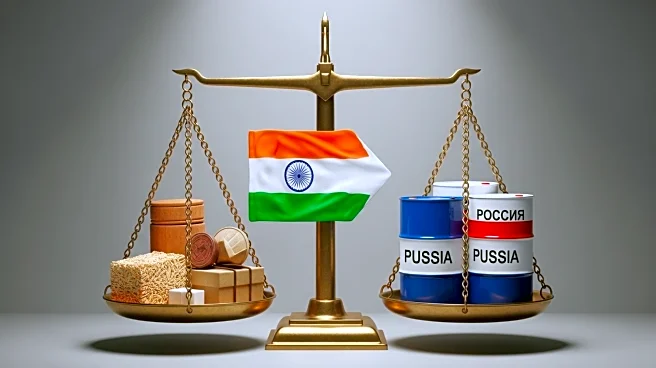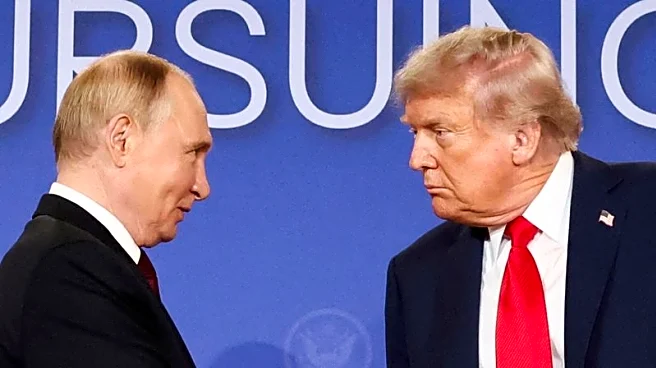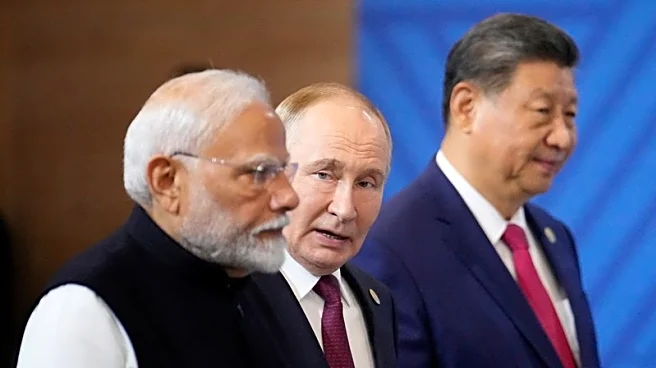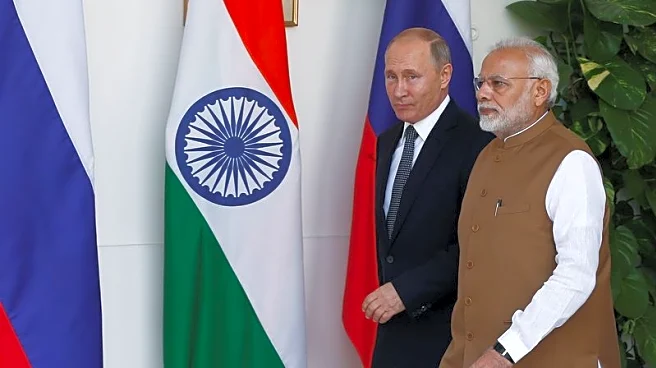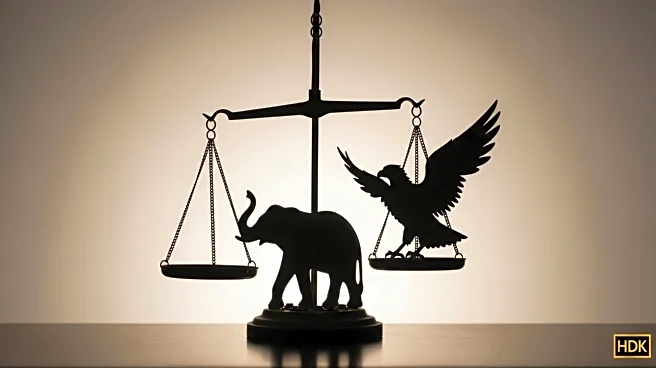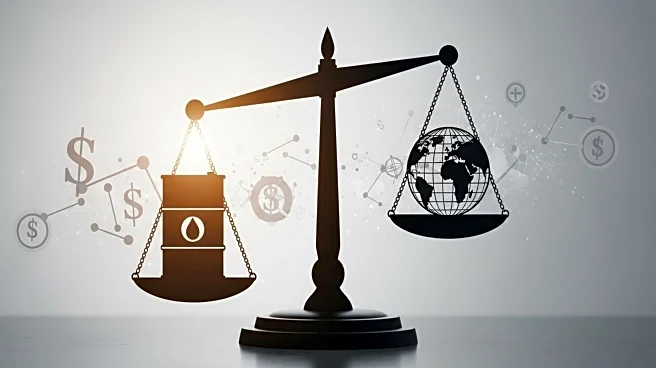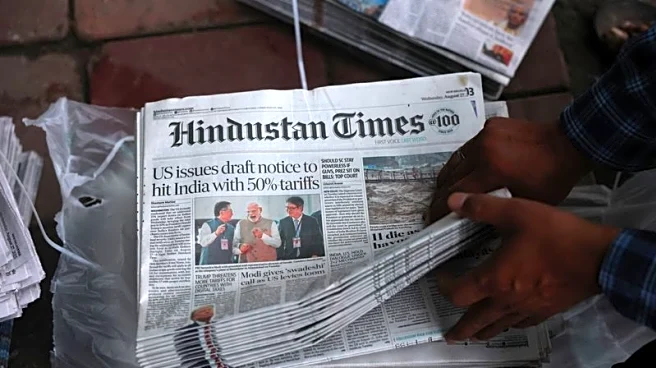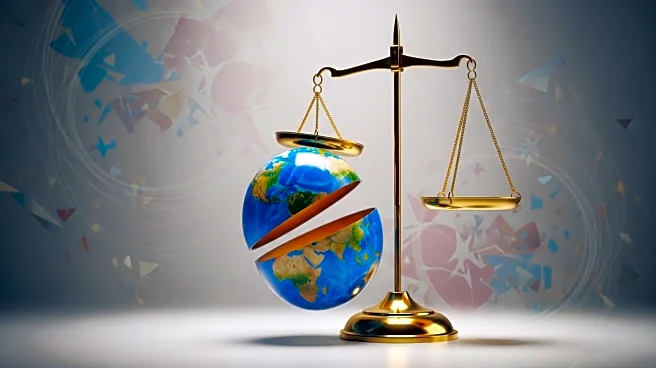Rapid Read • 8 min read
The Trump administration has implemented a significant increase in tariffs on Indian goods, raising them to 50 percent. This move is a direct response to India's continued purchase of Russian oil, which the U.S. views as indirectly supporting Russia's military actions in Ukraine. The tariff hike is intended to pressure India into reconsidering its trade relations with Russia and to negotiate more favorable trade terms with the United States. The increased tariffs are expected to impact major Indian export sectors, including diamonds, jewelry, clothing, and farmed shrimp, leading to job losses in these industries. In response, Indian Prime Minister Narendra Modi has announced economic stimulus measures and emphasized a push for self-reliance under the 'Make in India' initiative.
AD
The tariff increase represents a significant escalation in trade tensions between the United States and India, two major global economies. The move could have far-reaching implications for U.S.-India relations, potentially driving India to strengthen ties with China, a traditional rival. This development also highlights the broader geopolitical struggle involving the U.S., Russia, and China, as countries navigate complex trade and diplomatic relationships. The tariffs could lead to economic disruptions in India, affecting its export-driven industries and potentially altering global supply chains. For the U.S., the decision underscores a strategic effort to isolate Russia economically while maintaining pressure on allies and partners to align with U.S. foreign policy objectives.
Prime Minister Modi's upcoming visit to China for a security summit could signal a shift in India's diplomatic strategy, as it seeks to balance its relationships with major global powers. The summit, attended by leaders from Pakistan, Iran, Russia, and other nations, may provide a platform for India to explore alternative economic partnerships. Meanwhile, the U.S. continues to engage in trade negotiations with China, with a temporary tariff truce in place until November. The outcome of these negotiations could influence future U.S. trade policies and impact global economic dynamics.
The tariff increase raises questions about the effectiveness of using economic sanctions as a tool for achieving foreign policy goals. It also highlights the challenges faced by countries like India, which must navigate complex international pressures while addressing domestic economic needs. The situation underscores the interconnectedness of global trade and the potential for economic policies to have unintended consequences, such as driving countries to seek new alliances or alter their strategic priorities.
AD
More Stories You Might Enjoy
